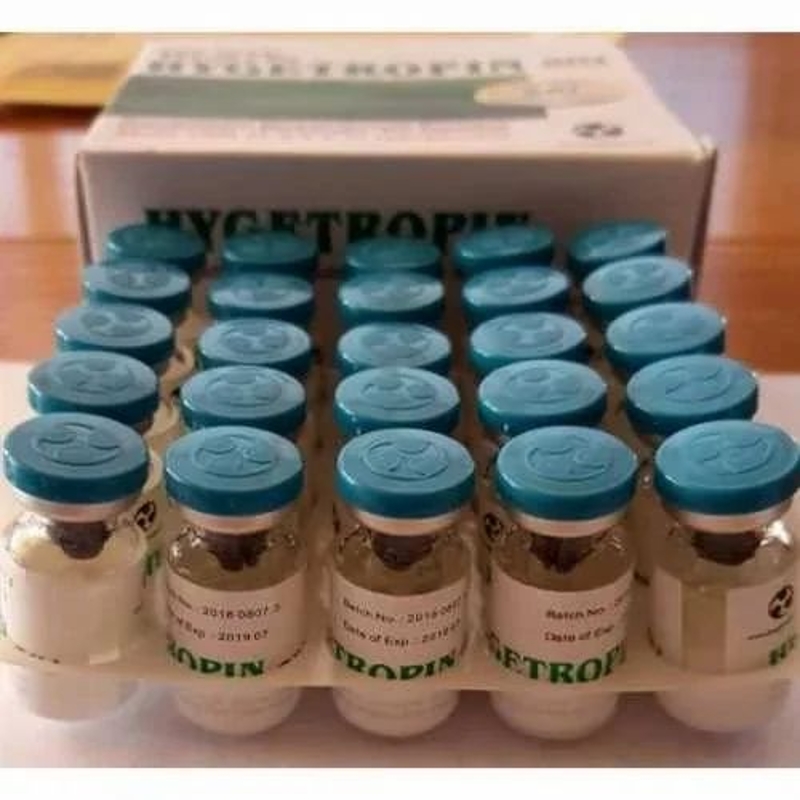-
Categories
-
Pharmaceutical Intermediates
-
Active Pharmaceutical Ingredients
-
Food Additives
- Industrial Coatings
- Agrochemicals
- Dyes and Pigments
- Surfactant
- Flavors and Fragrances
- Chemical Reagents
- Catalyst and Auxiliary
- Natural Products
- Inorganic Chemistry
-
Organic Chemistry
-
Biochemical Engineering
- Analytical Chemistry
-
Cosmetic Ingredient
- Water Treatment Chemical
-
Pharmaceutical Intermediates
Promotion
ECHEMI Mall
Wholesale
Weekly Price
Exhibition
News
-
Trade Service
The classic role of AMP-activated protein kinase (AMPK) is to act as a cellular energy receptor that is activated when the energy state decreases, signaled by an increase
in AMP/ATP and ADP/ATP ratios.
Once activated, AMPK restores energy homeostasis
by promoting the catabolic pathway of ATP production while inhibiting the energy expenditure process.
More and more studies have found that AMPK plays an important role
in the occurrence and development of various metabolic diseases such as obesity and diabetes.
Nature Reviews Molecular Cell Biology (IF=113.
915) is an internationally recognized top journal in the field of life medicine, which mainly publishes academic papers
in molecular biology, cell biology and other research directions.
On October 31, 2022, the journal published an online review, "New insights into activation and function of the AMPK
.
" In this review, the authors focus on the latest atypical pathways of AMPK, including AMPK's perception of mitochondria, DNA, and lysosomal damage, explore the role of AMPK in cancer, obesity, diabetes, nonalcoholic steatohepatitis (NASH), and other diseases, and reveal new insights
into AMPK activation and function in researchers' darlings.
1.
Mitochondria, DNA, and lysosomal damage activates the AMPK mechanism
1.
1 Role of AMPK in sensing and responding to mitochondrial damage (Figure 1a)
ATP synthase located on the surface of the crest matrix is inhibited due to oxidative damage or mitochondrial inhibitors, increasing the intramitochondrial ADP/ATP ratio
.
Then it is delivered to the intermembrane/intercrest space by ADP/ATP transloase, and the ADP/ATP ratio increases, which in turn converts AK2-catalyzed ADP to AMP and activates AMPK, thereby promoting mitochondrial biogenesis, division, and mitochondrial autophagy to maintain mitochondrial homeostasis
.
1.
2 Role of AMPK in DNA damage and repair (Figure 1b)
DNA damage leads to an increase in nuclear Ca2+, possibly due to its release from the nuclear envelope, although its exact source remains unclear
.
At the same time, DNA damage may trigger apoptosis
through activation of the DNA damage-sensitive kinase ATM/ATR and p53 downstream of CHK2.
Activation of the pro-apoptotic factor caspase 3 cleaves the nuclear output signal NES of AMPKα1 and causes it to be net translocated from the cytoplasm to the nucleus
.
In the nucleus, α1-containing AMPK complexes are phosphorylated and activated
by Ca2+/CaMKK2 (triggered by elevated Ca2+).
AMPK phosphorylates and inhibits exonuclease EXO1 and 53 BP1 to assist in DNA damage repair
.
1.
3 Role of AMPK in sensing and responding to lysosomal damage (Figure 1c)
In undamaged lysosomes, the deubiquitinase USP9X removes ubiquitin clusters
from the lysosomal surface.
Lysosomal damage exposes lumen glycans on LAMP1/2, recruiting cytoplasmic lectin GAL9
.
This in turn recruited AMPK and TAK1 onto the lysosomal surface, while replacing USP9X
.
USP9X deletion enhances the formation of ubiquitin clusters on the surface of lysosomes, thereby triggering phagocytosis of autophagosomes, while also promoting the formation of k63-linked polyubiquitin chains on the TAK1 complex, leading to their activation and subsequent AMPK activation
.
AMPK promotes lysosomal autophagy and may be involved in phosphorylation of ULK1, while activating TFEB/TFE3 to stimulate biogenesis
of new lysosomal components.
Figure 1.
Schematic diagram of mitochondria, DNA, and lysosomal damage activation AMPK mechanisms
2.
The role of AMPK in cancer
The study found that AMPK works downstream of the known tumor suppressor LKB1 and may mediate many of its downstream effects, raising the obvious question: Is AMPK a tumor suppressor? This view was initially supported
by several arguments.
First, AMPK inhibits most biosynthetic pathways (Figure 2); Second, AMPK inhibits the growth-promoting mTORC1 pathway, which is activated in many cancers; Finally, the use of the AMPK-activating drug metformin for type 2 diabetes was found to be associated with a lower risk of cancer (although it is not currently possible to prove whether the reduction in risk is due to metformin autonomously activating AMPK in tumor progenitor cells).
Figure 2.
AMPK maintains cellular homeostasis through different phosphorylations
In a recent study on T-cell acute lymphoblastic leukemia/lymphoma (T-ALL), when the Prkaa1 gene (encoding AMPKα1, the only AMPK catalytic subunit expressed by developing T cells in the thymus) was knocked out in a T cell-specific manner, the resulting tumor developed earlier and progressed faster, indicating that the loss of specific AMPK in tumor progenitor cells promoted tumorigenesis
。 But another study on the same cancer type came to the opposite conclusion, finding that knockout of Prkaa1 inhibited T-ALL activation and function, suggesting that the presence of AMPK promotes cancer.
Why do these two similar studies come to diametrically opposed conclusions? In the first model, AMPK was removed before T-ALL development, while in the second model, AMPK was removed after T-ALL development (by injection tamoxifen
).
This suggests that AMPK can initially act as an inhibitor
of tumors.
However, if after tumorigenesis (despite AMPK's best efforts to prevent it), AMPK transforms into a tumor promoter, protecting tumor cells from the stress
of their rapid growth.
It also suggests that AMPK, as an inhibitor, rather than an activator, is more likely to find a place
in treating pre-existing cancers.
3.
AMPK and obesity
The activation of AMPK can affect energy intake and expenditure throughout the body, so it may be an important target in the treatment of
obesity.
Studies in mice exposed to cold or treated with gastrin found that activated AMPK in the hypothalamus stimulated appetite through phosphorylation of ACC, while mice with reduced hypothalamic AMPK consumed fewer
calories.
Reducing AMPK in neurons in the hypothalamus also stimulates energy expenditure
by activating sympathetic drive to brown adipose tissue.
In contrast, activation of AMPK in adipose tissue using norepinephrine or beta3-adrenergic agonists, AMPKβ1 activators (A-769662), or gene mutations (D316A mutations of AMPK-γ1) can promote mitochondrial fatty acid oxidation and energy expenditure, leading to reduced
weight gain in mice on a high-fat diet.
Overall, these data indicate a dichotomy between central and peripheral effects, i.
e.
inhibition of AMPK in the brain but activation in fat cells, which is desirable for suppressing appetite and stimulating energy expenditure for weight loss
.
4.
AMPK and diabetes
AMPK has decreased activity in obese, insulin-resistant mice and human skeletal muscle, and has long been considered a potential therapeutic target
for diabetes given its role in increasing muscle glucose uptake.
Metformin, the SGLT-2 inhibitor canagliflozin, and salicylates can directly or indirectly activate AMPK
by inhibiting mitochondrial function.
Over the past 5 years, it has been found that inhibition of Thr172 dephosphorylation, or direct AMPK activator that binds to the ADaM site and activates the AMPK complex containing β1 and β2, is able to increase glucose uptake in muscle and lower blood glucose
in patients with type 2 diabetes.
However, one challenge for muscles is that activating the AMPK complex containing the beta2 subunit, the main β isoform expressed in skeletal muscle and cardiac muscle, promotes cardiac hypertrophy, which hinders the development of
clinical drugs for AMPK.
One potential way to avoid this is to target a study that is highly expressed in skeletal muscle rather than cardiac muscle (the gamma3 subunit is important for stimulating glucose uptake).
5.
AMPK and NASH
AMPK complexes containing β1 are important
for inhibiting hepatic adipogenesis and stimulating fatty acid oxidation by phosphorylation inhibition of ACC.
When constitutive activation of hepatic AMPK, as well as some small molecules against the β1 isomer, it can reduce liver lipids and inflammation as well as serum cholesterol
.
The effect is enhanced
when combined with an indirect activator of AMPK, such as metformin.
Importantly, activation of β1-containing complexes also reduces liver fibrosis and TGFβ-induced activation of stellate cells
.
Interestingly, the antifibrotic effect of AMPK is similar to that observed with ACC inhibitors, suggesting that ACC inhibition may be the primary mechanism
mediating the effects of AMPK on nonalcoholic fatty liver disease.
Activation of AMPK may also prevent hepatocyte damage
by phosphorylation and inhibition of caspase 6.
An AMPK activator (PXL770) recently entered phase II clinical trials and was found to reduce lipogenesis, liver fat mass, blood glucose (including fasting plasma glucose and HbA1c), and insulin resistance in people with type 2 diabetes, but not serum triglyceride levels
.
Together, these results suggest that targeting beta-1-containing complexes may reduce NASH and improve glucose balance, although further research is needed to determine whether it is also effective in reducing fibrosis
in clinical populations.
6.
Emerging areas for AMPK
The latest studies have shown that AMPK activators have beneficial therapeutic effects
on autosomal polycystic kidney disease, inflammatory bowel disease, muscular dystrophy, neuronal loss, and X-linked leukodystrophy.
The anti-aging therapies dasatinib and quercetin, which extend the lifespan of mice, are also activators
of AMPK.
However, it is important to consider that long-term activation of AMPK can have adverse side effects, including potential cardiac and renal hypertrophy, Alzheimer's disease, etc
.
Therefore, tissue-specific and transient (rather than persistent) AMPK activation, similar to daily exercise, may be key to the treatment of
these disorders.
Summary and outlook
In summary, AMPK not only regulates metabolism, but also cellular functions such as autophagy, mitochondrial and lysosomal balance, DNA repair, and immunity
.
Still, the rationale for most of these mechanisms is to protect the adenine nucleotide library and, more broadly, the energy balance
.
Therefore, the name AMPK is still appropriate
.
From a drug development perspective, the diversity of AMPK has led to concerns about
the possible unintended consequences of targeting AMPK.
Although cardiac hypertrophy has been observed with potent ubiquitous β activators in non-human primates, moderate use of AMPK activators has been found to be safe and effective in clinical studies in patients with type 2 diabetes and
/or cardiovascular disease.
Further research will reveal new substrates and effects of AMPK, which may expand the therapeutic application
of potential AMPK in various disease areas.







